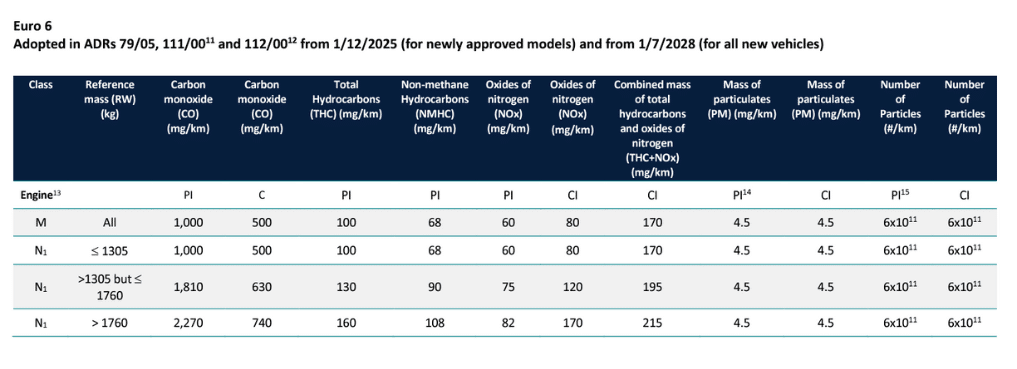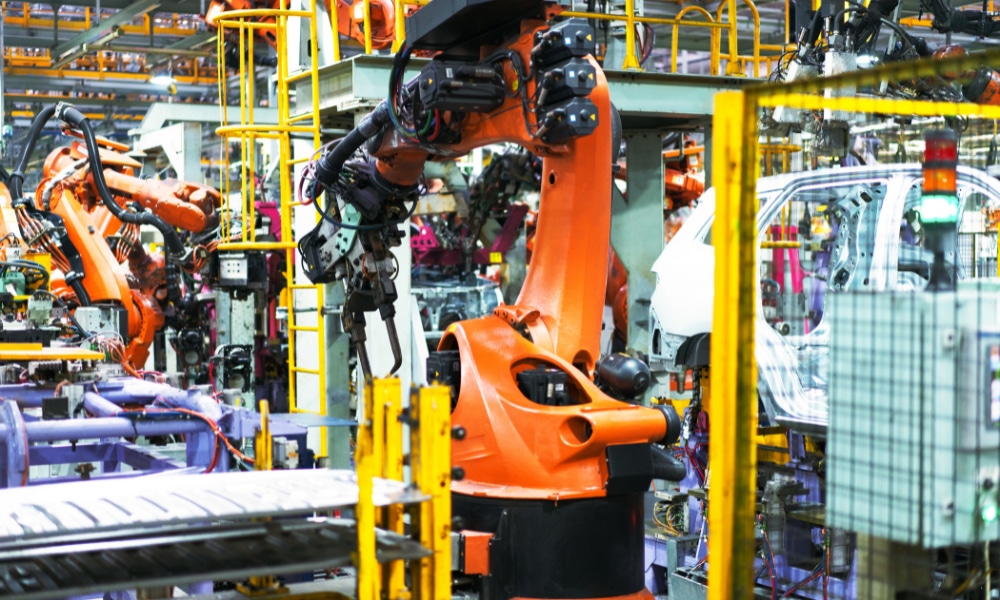Aussies don’t like to think that we’re behind, but we know we are in many areas across many industries. The Lucky Country adopted Europe’s ‘Euro 5’ emission standards for light and heavy vehicles in 2013. These standards were adopted by Europe in 2010 and followed by the adoption of Euro 6 in 2014. The announcement by the Albanese government that we will be adopting Euro 6 standards from Dec 2025 was met with groans and uproar from many across the spectrum. The new standard has been called the New Vehicle Efficiency Standard (NVES). Many are concerned about the impact on Australia’s automotive industry and Aussies are worried about what this will mean for car prices. Let’s look at what the change in emissions targets means for Australia and how this ‘tax’ might impact you.
What are Australia’s emissions standards for vehicles?
Australia currently follows the Euro 5 standards for light and heavy vehicles. From December 2025 all newly approved models of vehicles must follow the Euro 6 standards. The Euro 6 standards will oversee all new vehicles from 2028.
Euro 5 Noxious Emissions Requirements in Australia, 2013 – 2025
The current standards, also known as noxious emissions requirements, cover light and heavy-duty vehicles. We’ll look at the light vehicle standards, as these standards impact all Australians.

[1] [8] PI – Positive Ignition (Petrol and LPG), CI – Compression Ignition (Diesel)
[9] Direct injection petrol vehicles only
[10] Except Category M vehicles designated as special social purpose vehicles
[11] ADR 111/00 adopts the Euro 6d laboratory tests for exhaust emissions, evaporative emissions, durability and on-board diagnostics adopted in UN Regulation 154
Source: The Department of Infrastructure, Transport, Regional Development, Communications and the Arts, Noxious Emission Limits for Light Vehicles (up to 3.5 tonnes GVM) at Euro 2 to 6 levels
Euro 6 Noxious Emissions Requirments in Australia, from 2025
The introduction of Euro 6 in 2025 will see a requirement for all light vehicles (newly approved, all new vehicles from 2028) to reduce the combined total of hydrocarbons and oxides from nitrogen by at least 60mg/km. This may not seem like a lot, but it will have an enormous positive impact on our environment.

[1] [13] PI – Positive Ignition (Petrol and LPG), CI – Compression Ignition (Diesel)
[11] ADR 111/00 adopts the Euro 6d laboratory tests for exhaust emissions, evaporative emissions, durability and on-board diagnostics adopted in UN Regulation 154
[14] [15] Direct injection petrol vehicles only
Source: The Department of Infrastructure, Transport, Regional Development, Communications and the Arts, Noxious Emission Limits for Light Vehicles (up to 3.5 tonnes GVM) at Euro 2 to 6 levels
Why has there been a change to vehicle emissions standards in Australia?
Unless you’ve been hiding under a rock, we should all be well aware that Australia is forging ahead with emission reductions. New targets and standards have been applied to many industries, and the auto industry was the next one up. The New Vehicle Efficiency Standard should see reductions of CO2 emissions each year from 2024 to 2029 of 12.2 per cent (passenger vehicles) and 12.4 per cent (utes and vans).
What will happen to vehicles that don’t meet the standard?
Once the changes to the emissions standards come into play, any vehicle manufactured for sale that does not meet the standard will need to pay. For every gram per kilometre that exceeds the emission standard, the manufacturer will need to pay $100. Most car manufacturers have models of all shapes and sizes in their catalogues, and it is expected that larger vehicles will be impacted the most.

What will the reductions in emissions mean for new vehicles?
Firstly, for anyone concerned, this will not affect existing vehicles! Your Datsun 180B is safe – but maybe not from redbacks taking up residence in the door (don’t ask how we know this). The new emissions standards will initially affect all new models approved for release and then be rolled out 3 years later to cover all new vehicles.
The changes will mean that vehicle manufacturers will need to alter varying facets of their vehicles to meet the targets. This could mean that manufacturers invest in improving engines and exhaust systems, adopt hybrid or electric alternatives, or move away from larger vehicles, such as utes, that emit greater emissions.
Australia’s poor-quality fuel
There’s no denying it, Australia has dirty fuel. We have relatively low fuel standards, which see a higher percentage of sulphur across ULP and Premium ULP (150ppm for ULP and 50ppm for PULP). The burning of this fuel contributes greatly to our emissions and vehicle manufacturers have a tough uphill climb when countering the fuel quality. Australia’s fuel quality was factored into the New Vehicle Efficiency Standard.
Will we pay more for vehicles once our emissions standards change?
The government have said ‘no’ as to whether we will see an increase in the price of vehicles once the new standards come into full effect in 2028. With the high adoption rate of electric vehicles, it would seem that Australians have taken matters into their own hands. But the possible flow-on effect of the ‘emissions tax’ must be considered. If a vehicle does not meet the standard, the manufacturer will either need to absorb the cost (which could be $1,000 or more per vehicle) or pass it on to the consumer.
The expected outcome of the new standards is that Australians will either purchase no or low-emission vehicles or opt for smaller family cars. Could this be the death of the family SUV or tradie’s ute? Time will tell, but we expect that Australians will either cop the price increase or switch to an EV. The latter will surely fall in line with the increasing popularity of electrification; moving away from fossil fuel dependency and taking control of your energy future.
Conclusion
While it is understandable the changes to things that impact our daily lives are often met with hostility, the emissions standards change is a positive step for Australia. Small changes often have the greatest impact when adopted by the masses. For most of us, this change will be minimal, if it has any impact at all. A clean future, with a view to net zero, should be something we all aspire to for our children and their children.
Looking for ways to reduce your bills whilst positively impacting the environment? Installing solar, battery storage, heat pump hot water systems, and other energy efficiency products, are all fantastic ways to make a difference to your wallet and the environment. Get started today with FREE quotes for products that will improve your home. Click the button below to begin!












































